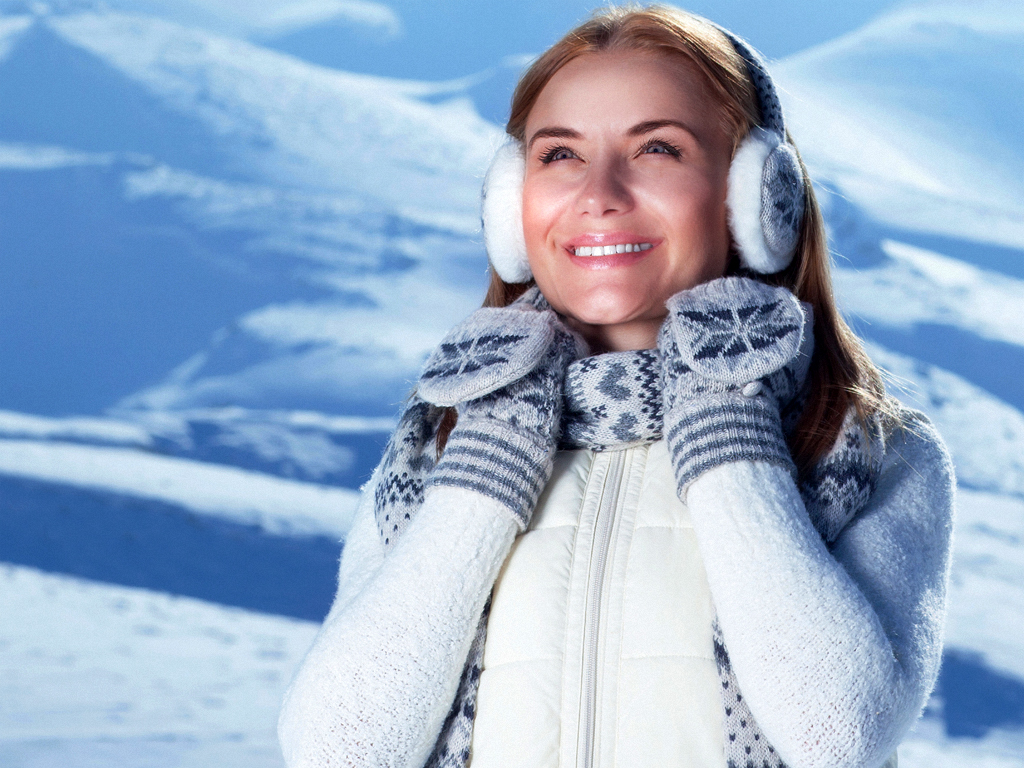Many Life Time members love to work out. Unfortunately, some of them experience aches and pains that make workouts less enjoyable. In fact, commonly asked questions I get from members regard how to minimize or eliminate the discomfort they feel while exercising. Because these questions are asked often, this article will explain how a well-designed warm-up and cooldown can make exercises feel better during a workout.

In my experience, people who notice discomfort when they exercise usually skip these two parts of the workout or don’t use them enough. Also, since the majority of questions I get from members on aches and pains involve joints of the lower body (knees, hips, etc.), this article will show 3 exercises, 8 stretches, 2 different warm-ups and 2 different cooldowns for the lower body that can be used immediately.
Lower-Body Dynamic Warm-Up Option 1:
This Warm-Up takes about 5 or 6 minutes to complete. It consists of 2 exercises and 2 stretches. It doesn’t require any equipment to accomplish.
- Side-Lying Clam: Do 2 sets of 20 to 25 reps/side.

- Get into a side-lying position with the knees and hips bent at about 90 degrees.
- Stack the heels together and roll your hips forward a bit (If your glutes are against a wall, your top glute is slightly forward and not touching the wall (about ½” to 1” away from the wall).
- With your heels stacked together, raise the top leg without letting your hips rotate back (If you are against a wall, try to avoid touching the wall with your top glute muscle).
- Lower your leg until it is slightly above (about ½”) the bottom leg so there is continuous tension on the muscle.
- Repeat steps c and d until the rep goal is completed and then do the opposite side.
- Glute Bridge: Do 2 sets of 20 to 25 reps.

- Lie down on your back so your palms are facing the ceiling.
- Pull your heels towards your hips so your knees are at about a 90-degree angle.
- Lift up the balls of your foot so only the heels are touching the floor.
- Lift your hips up until your shoulders, hips and knees are in a straight line.
- Squeeze your glutes together on top of the movement for 1 to 2 seconds.
- Lower the hips back to the floor in a controlled manner.
- Repeat steps d through f until the rep goal is completed.
- Dynamic Kneeling Hip Flexor Stretch: Do 2 sets of 8 to 10 reps on each side.

- Get into a ½ kneeling position on the floor.
- Do a “Posterior Pelvic Tilt” by rolling the hip forward on the side that the knee is on the ground (you should feel a slight stretch on the front of the hip).
- Gently lean forward and simultaneously raise the arm (on the side that the knee is on the ground) over your head until you feel a deeper stretch in the front of the hip.
- Hold this position for 1 to 2 seconds.
- Gently lean back and simultaneously lower the arm (on the side that the knee is on the ground).
- Repeat steps c through e until the rep goal is completed and then do the opposite side.
- Dynamic Runner Quad Stretch: Do 2 sets of 8 to 10 reps on each side.

- Stand with your feet about shoulder width apart.
- Bend one knee and grab that foot with the same side arm.
- While holding the foot, do a “Posterior Pelvic Tilt” by rolling your hip forward until you feel a slight stretch down the front of the leg.
- Hold this position for 1 to 2 seconds.
- Switch legs and repeat steps b through d until the rep goal is completed on both legs.
Lower-Body Dynamic Warm-Up Option 2:
This Warm-Up takes about 5 to 6 minutes to complete. It consists of 2 exercises and 2 stretches. Regarding equipment, it requires a Mini Band.
- Mini Band Lateral Walk: Do 2 sets of 20 to 25 reps/side.

- Place the Mini Band right above or below your knees based on comfort and fitness level (the band above the knee will be easier to do than the band below the knee).
- Stand at a shoulder-width stance so the band has tension on it.
- Take a step to the right with the right foot.
- Take a step to the right with the left foot.
- Take a step to the left with the left foot.
- Take a step to the left with the right foot.
- Repeat steps c through f until the rep goal is completed for each leg.
- Glute Bridge: Do 2 sets of 20 to 25 reps.

- Lie down on your back so your palms are facing the ceiling.
- Pull your heels towards your hips so your knees are at about a 90-degree angle.
- Lift up the balls of your foot so only the heels are touching the floor.
- Lift your hips up until your shoulders, hips and knees are in a straight line.
- Squeeze your glutes together on top of the movement for 1 to 2 seconds.
- Lower the hips back to the floor in a controlled manner.
- Repeat steps d through f until the rep goal is completed.
- Dynamic Kneeling Hip Flexor Stretch: Do 2 sets of 8 to 10 reps on each side.

- Get into a ½ kneeling position on the floor.
- Do a “Posterior Pelvic Tilt” by rolling the hip forward on the side that the knee is on the ground (you should feel a slight stretch on the front of the hip).
- Gently lean forward and simultaneously raise the arm (on the side that the knee is on the ground) over your head until you feel a deeper stretch in the front of the hip.
- Hold this position for 1 to 2 seconds.
- Gently lean back and simultaneously lower the arm (on the side that the knee is on the ground).
- Repeat steps c through e until the rep goal is completed and then do the opposite side.
- Dynamic Runner Quad Stretch: Do 2 sets of 8 to 10 reps on each side.

- Stand with your feet about shoulder width apart.
- Bend one knee and grab that foot with the same side arm.
- While holding the foot, do a “Posterior Pelvic Tilt” by rolling your hip forward until you feel a slight stretch down the front of the leg.
- Hold this position for 1 to 2 seconds.
- Switch legs and repeat steps b through d until the rep goal is completed on both legs.
Lower-Body Cooldown Option 1:
This Cooldown takes about 5 to 6 minutes to complete. It consists of 3 stretches. No equipment is needed.
- Static Kneeling Hip Flexor Stretch: Hold for 30 to 45 seconds on each side.

- Get into a ½ kneeling position on the floor.
- Do a “Posterior Pelvic Tilt” by rolling the hip forward on the side that the knee is on the ground (you should feel a slight stretch on the front of the hip).
- Gently lean forward and simultaneously raise the arm (on the side that the knee is on the ground) over your head until you feel a deeper stretch in the front of the hip.
- Hold this position for 30 to 45 seconds on each side.
- Static Runner Quad Stretch: Hold for 30 to 45 seconds/side.

- Stand with your feet about shoulder width apart.
- Bend one knee and grab that foot with the same side arm.
- While holding the foot, do a “Posterior Pelvic Tilt” by rolling your hip forward until you feel a slight stretch down the front of the leg.
- Hold this position for 30 to 45 seconds on each side.
- Static Kneeling Calf Stretch: Do 2 sets of 30 to 45 seconds on each side.

- Stand with your feet staggered front/back at shoulder width, making sure the toes are pointed forward on each foot.
- Place your hands on top of the front leg and lean forward with your back foot heel flat on the ground until you feel a stretch in your calf muscle.
- For a deeper stretch, squeeze the glute on the side where your foot is back.
- Hold the stretch for the required amount of time and switch sides, repeating steps a through c.
Lower-Body Cooldown Option 2:
This Cooldown takes about 5 to 6 minutes to complete. It consists of 3 self-massage stretches. Regarding equipment, a lacrosse ball, Tiger Tail and foam roller are needed.
- Lacrosse Ball Foot Self-Massage: Do 2 sets of 30 to 45 seconds on each.

- Place the arch of your foot on top of a tennis or lacrosse ball (lacrosse ball is more intense).
- Apply pressure with your body weight and roll your foot on top of the ball.
- When the required amount of time is achieved, repeat steps a and b on the other foot.
- Tiger Tail Lower-Leg Self-Massage: Do 2 sets of 30 to 45 seconds on each side.

- Get in a seated or kneeling position.
- Place the Tiger Tail on the lower leg muscles that need attention (front, side or back).
- Gently roll the Tiger Tail up and down the muscle using a slow, controlled speed.
- When the required amount of time is achieved, repeat steps a through d on the other leg.
- Foam Roller Hip Flexor Self-Massage: Do 2 sets of 30 to 45 seconds on each side.

- Place the foam roller on the floor and place the hip of one side on top of it with your other leg resting on the floor.
- Slowly move your body forward so the roller moves down your leg until it is right above your knee.
- Slowly move your body back so the roller moves up your leg until you are in the starting position.
- When the required amount of time is achieved, repeat steps a through c on the other leg.
The exercises, stretches, warm-ups and cooldowns listed above are very time efficient and can be used by most fitness enthusiasts. In fact, in my experience 75% of people with knee or hip discomfort from running, lifting or taking GX Studio classes have minimal issues when taking the time just to do one of the two warm-ups prior to classes or exercise sessions.
If time permits, do one of the cooldowns right after the exercise session or later in the day (right before bed is a great time to do the cooldown stretches as it helps people get better sleep and recovery). If you are limited on time, just pick one of the static stretches or self-massages and do one of them each night. It doesn’t sound like much, but it is way more than most people do and makes a noticeable difference.
It is amazing how much better people feel by doing these exercises, stretches and, if time permits, warm-ups, cooldowns or both. It is just a matter of actually doing them.
In health, Corey Grenz — Program Specialist and Master Trainer — Life Time, Chanhassen
This article is not intended for the treatment or prevention of disease, nor as a substitute for medical treatment, nor as an alternative to medical advice. Use of recommendations in this and other articles is at the choice and risk of the reader.






